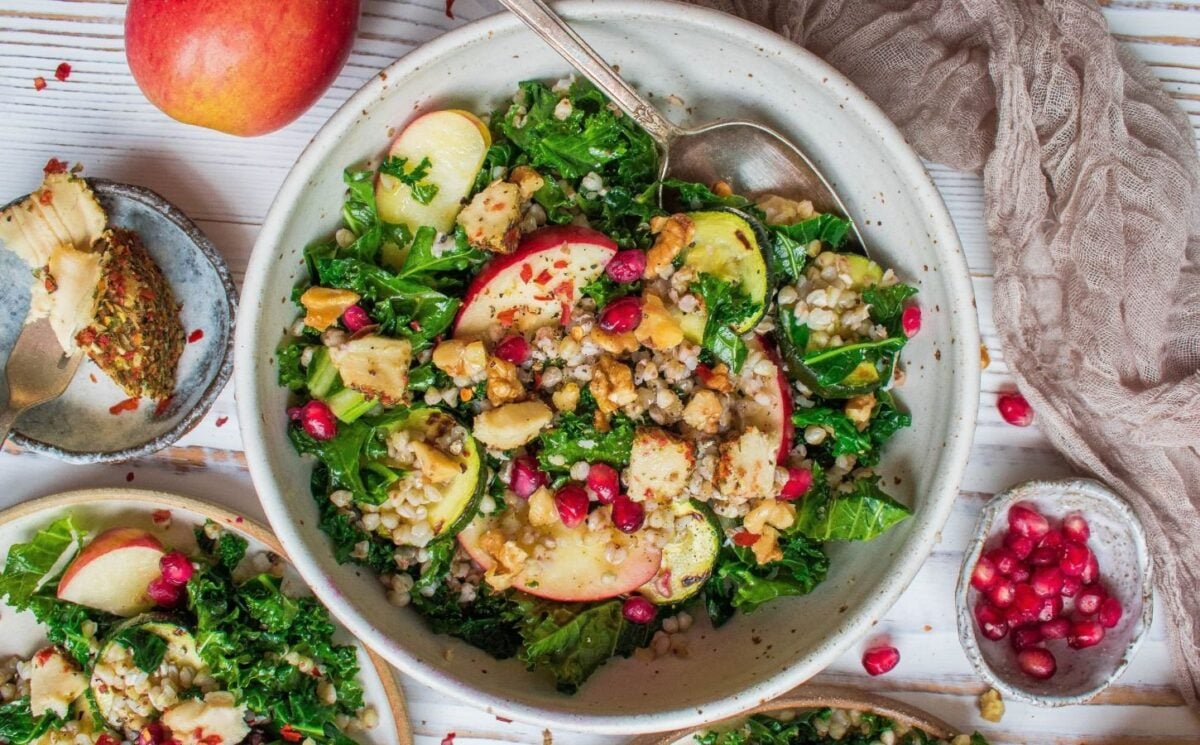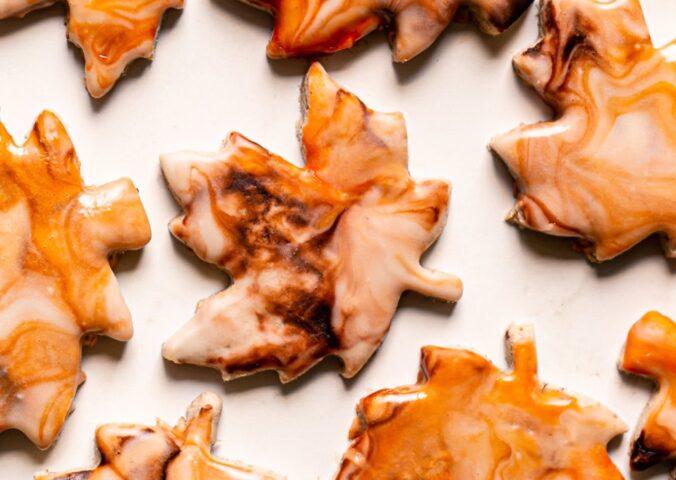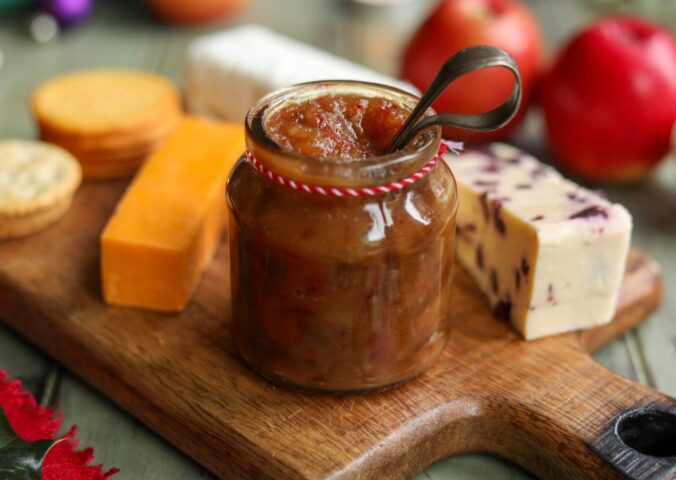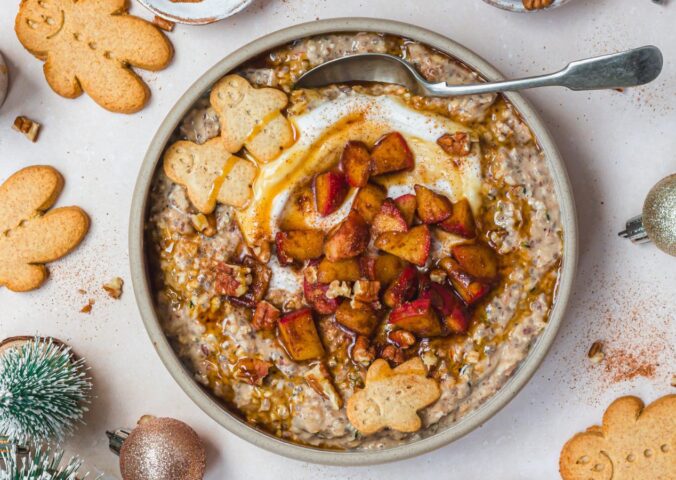Vitamin C is an essential part of any healthy diet. It helps the human body produce blood vessels, cells, cartilage, collagen, and muscle, among other things.
Getting the right amount of vitamin C also helps the body heal any cuts or scrapes, and studies indicate it can have a positive impact on the immune system. If that isn’t enough to convince you of vitamin C’s importance, it can also help the body to absorb – and metabolize – other essential nutrients like iron, folate, and calcium.
With that in mind, we’ve chosen 20 of our favorite vegan, vitamin C-packed recipes.
What does vitamin C do?
Vitamin C (also known as ascorbic acid) is a nutrient that supports the growth and repair of tissues and cells throughout all parts of the human body.
It’s also an antioxidant, which means it helps protect against free radicals – molecules that are thought to contribute to the risk of chronic heart disease, diabetes, and cancer. Furthermore, vitamin C helps support our teeth because of its impact on skeletal health.
Because the human body doesn’t naturally store vitamin C, we have to ingest it through the food that we eat daily. Severe vitamin C deficiency can cause serious health issues such as scurvy, but most people who eat a well-balanced diet get plenty from fruit and vegetables.
You can also boost vitamin C through supplementation and multivitamins, if needed, but this can cause side effects and may not have the same benefits as ingesting it through food.
(Please note, this is intended as a guide only. If you are worried about your vitamin C intake or have questions about absorption, always contact a health professional.)
Which foods are high in vitamin C?
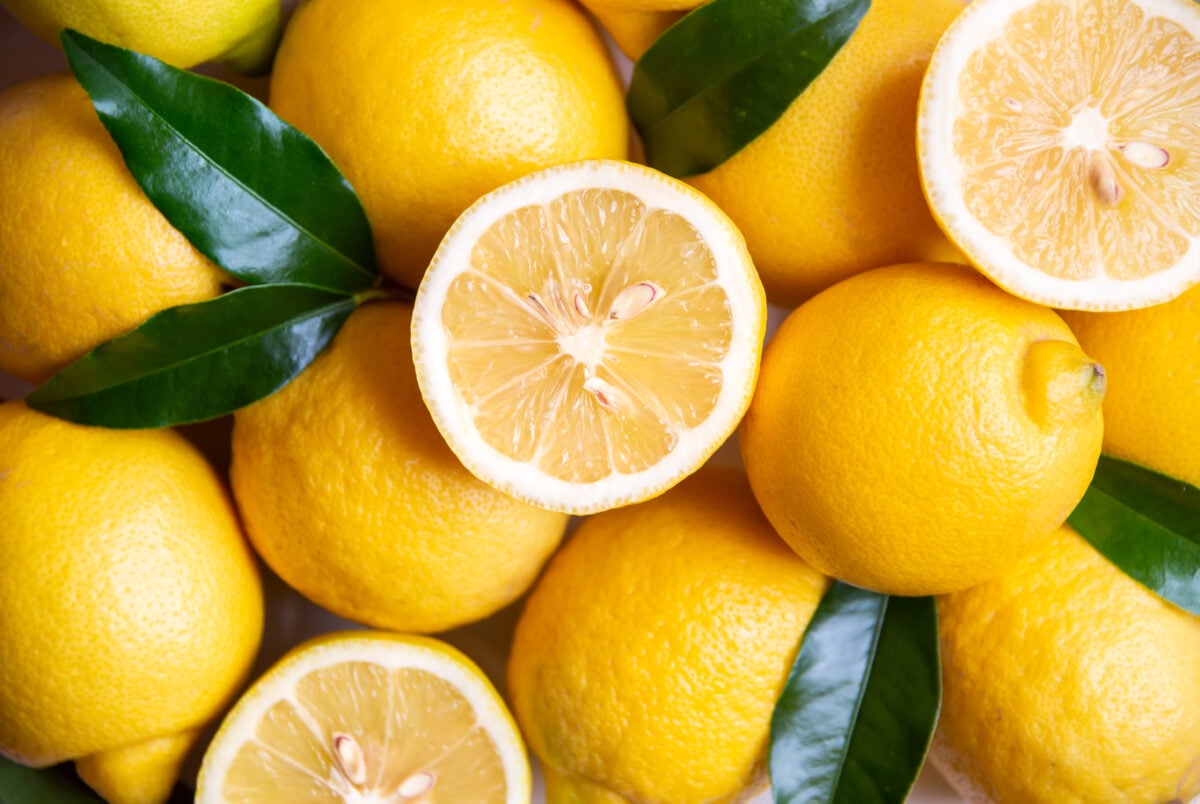
According to the National Institute of Health (NIH), the recommended daily allowance (RDA) for vitamin C is 75 to 90 milligrams (mg), while the UK’s National Health Service (NHS) suggests a minimum of 40 mg per day for adults aged 19 – 64.
Most animal-derived foods don’t contain much vitamin C, whereas plant-based foods like fruits and vegetables are generally rich in the essential nutrient.
Specific foods to emphasize for a vitamin C boost include citrus fruits like oranges and lemons, bell peppers, strawberries, blackcurrants, guava, kiwis, kale, broccoli, sprouts, potatoes, chili peppers, pumpkin, and the Australian Kakadu plum, which contains the highest concentration of vitamin C of any food – around 100 times more than oranges.
Vitamin C is widely thought to be best absorbed in a raw state and combined with iron. This is partly why it has become commonplace to drink a glass of orange juice with a breakfast of fortified cereal: the iron and the vitamin C are each aided in absorption by the other.
Another way to maximize absorption of vitamin C – or any essential nutrient – is to make sure you’re spreading it out over the day. For example, ensuring you include a vitamin C-rich ingredient in each of your meals or snacks rather than all in one go.
Severe vitamin C deficiency is fairly rare, however, only around nine percent of adults eat the RDA of fruit and vegetables overall, and a variety of studies have highlighted cost, availability, and preparation time as the primary barriers to produce consumption in the US.
20 vibrant vitamin C-packed recipes
If you are looking to maximize your veggie consumption – and boost your vitamin C intake – these 20 recipes feature many of the staple foods highlighted above, including sprouts, kale, lemons, strawberries, broccoli, and pumpkin. Let’s dive in.
Creamy tahini kale salad
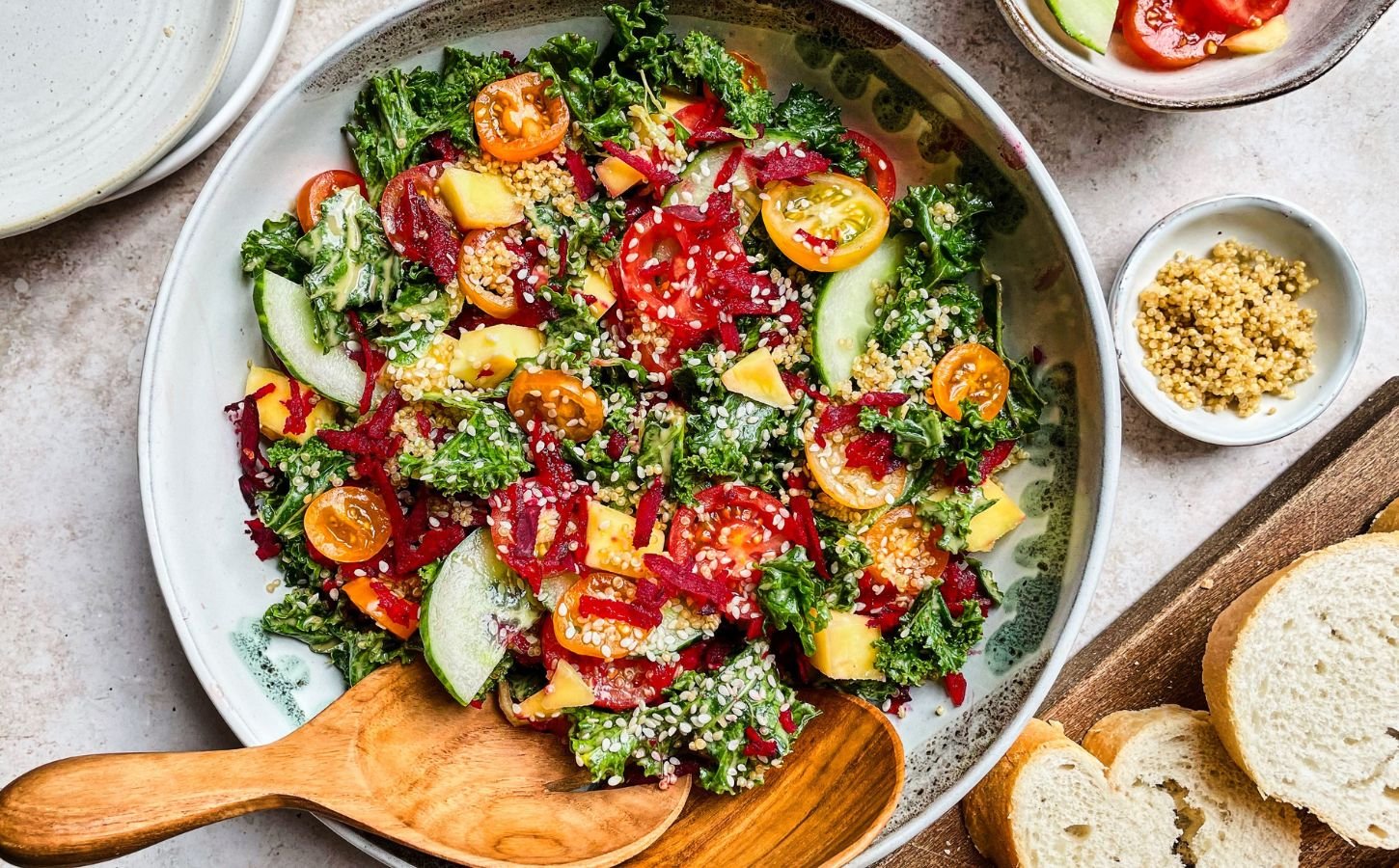
The Viva! Vegan Recipe Club put this recipe together for a creamy tahini kale salad, but it’s easily customizable, which means you can add in any fruit or veggies you have on hand – or are craving right now – for extra flavors, textures, and nutrients.
A 100g portion of raw kale contains around 93 mg of vitamin C, which is just over 100 percent of the RDA. It also contains plenty of vitamin K and the antioxidant carotenoids lutein and zeaxanthin. Add a squeeze of fresh lemon juice for an additional boost.
Find the recipe here.
Butternut squash dhal
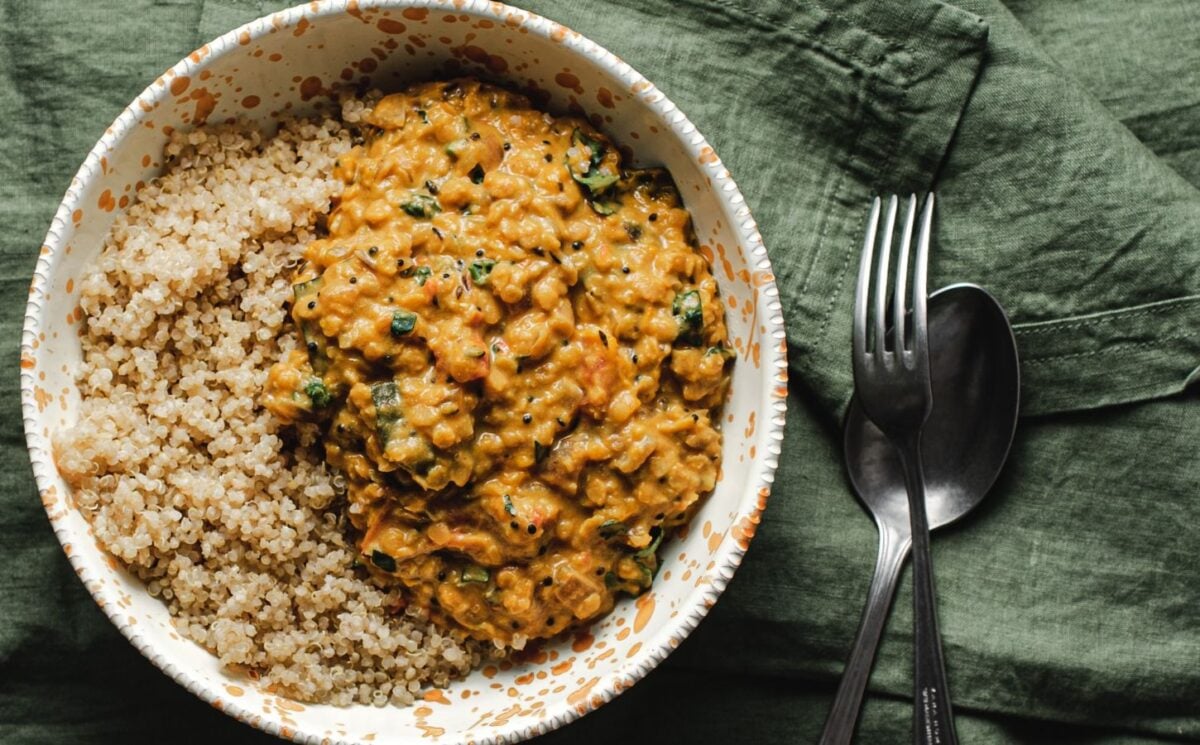
This recipe is ideal for boosting both iron and vitamin C together. Ashley Madden, the owner of Rise Shine Cook, combines red lentils with butternut squash, cashew milk, and spices for a nutrient-dense, warming, and filling meal. (Pair with fresh kale for some extra vitamin C.)
Find the recipe here.
Bean, kale, and lemon stew
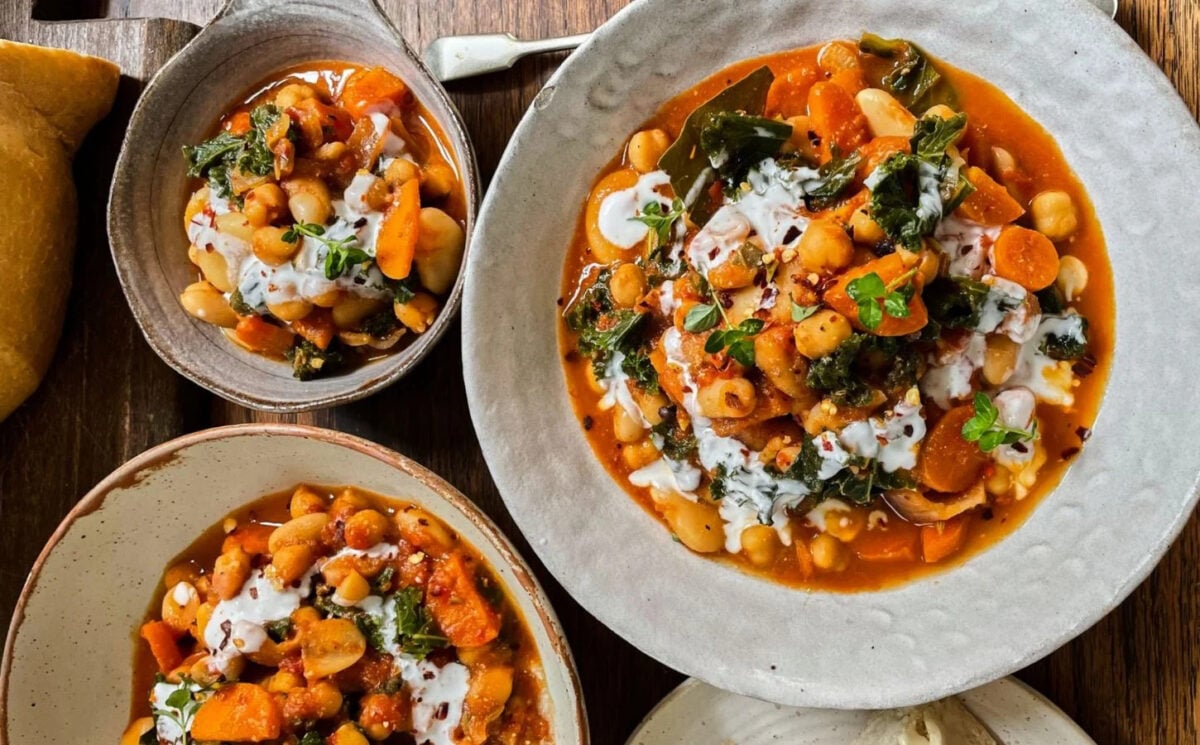
This one is also easy to customize and various different beans can be swapped in or combined. Taken from Viva!’s new cookbook ‘Everyone Can Cook Vegan,’ it mixes the beans with kale and fresh lemon for protein, iron, and vitamin C, as well as K and A.
Find the recipe here.
Roast pumpkin and kale salad
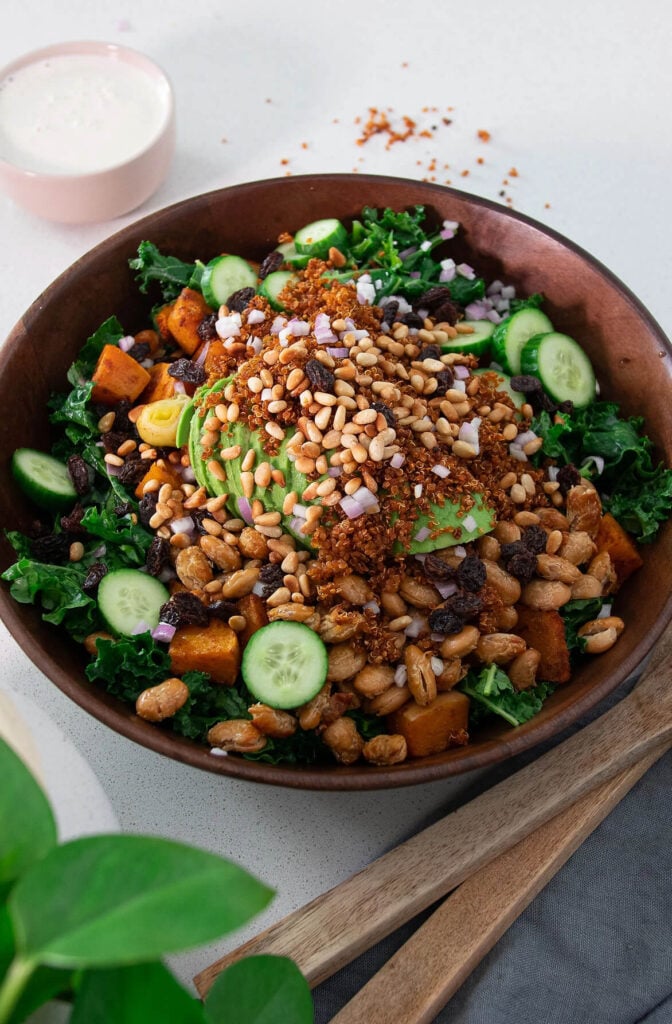
With 10 different plant ingredients, plenty of fiber, iron, calcium, and around 10mg of vitamin C per 100g of pumpkin alone, this salad from Plantbaes is a fantastically nutritious weeknight meal option. Layers of flavor, unique textures, and lemony dressing to top it off.
Find the recipe here.
Pesto Brussels sprouts
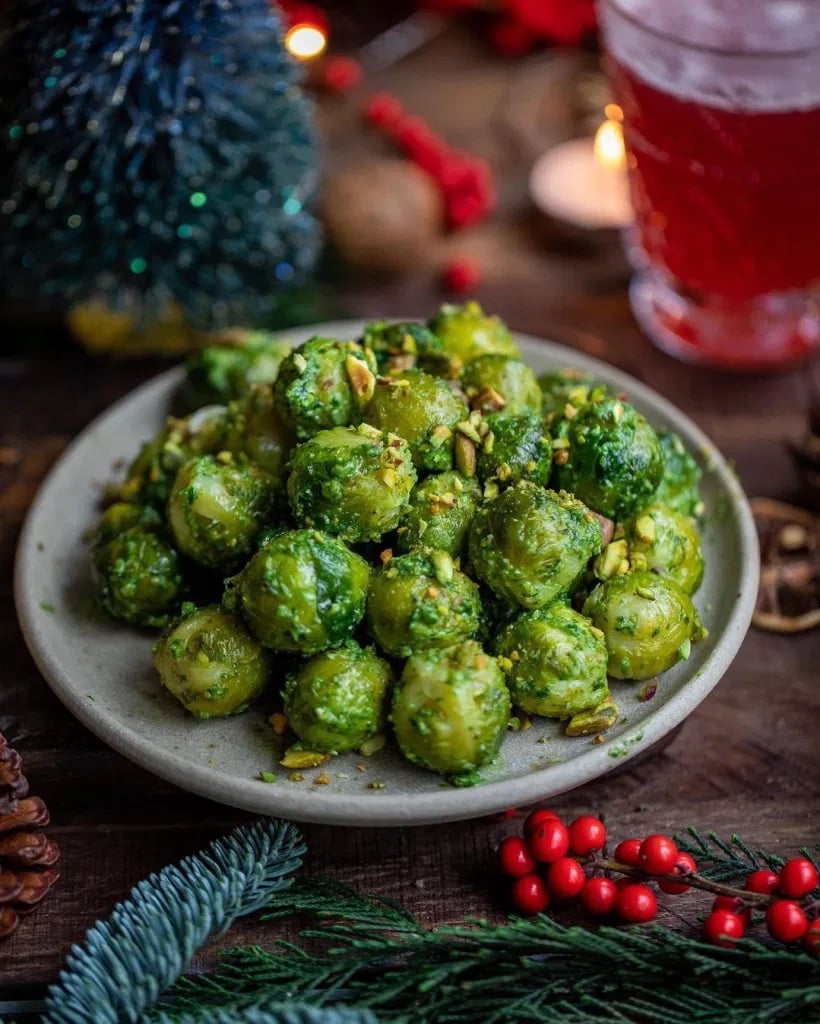
For a unique and delicious take on brussels sprouts, try this recipe from the Happy Skin Kitchen. It combines the extremely nutritious (85 mg of vitamin C per 100g) brussels sprout with a fresh vegan pesto that swaps parmesan for nooch.
Find the recipe here.
Baked butternut squash with mushrooms
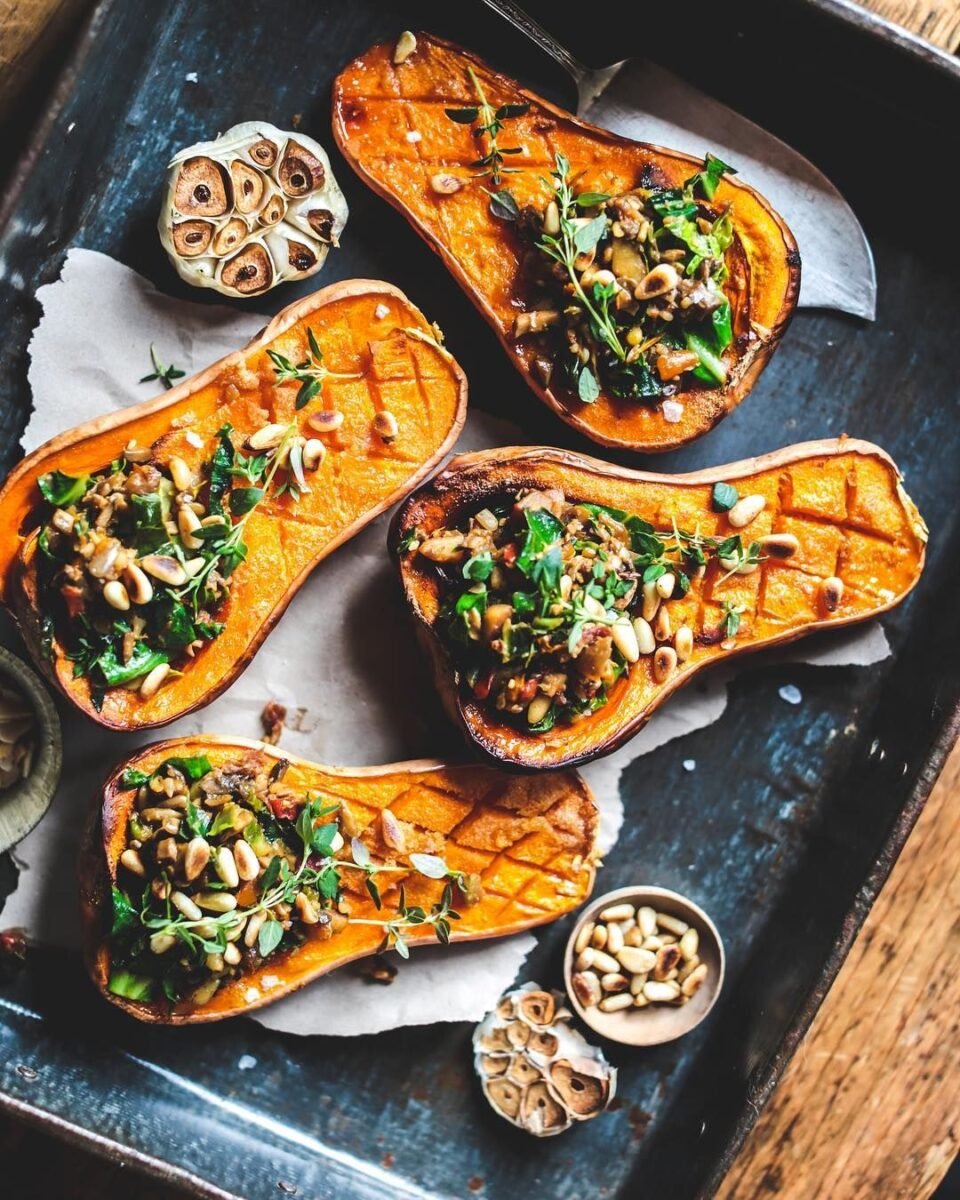
Rebel Recipes combines baked butternut squash with a flavorsome and nutritious mushroom filling in a unique and memorable dish. Topped with fresh thyme, toasted pine nuts, and a drizzle of extra virgin olive oil, this main works for any occasion.
Find the recipe here.
Creamy cauliflower casserole
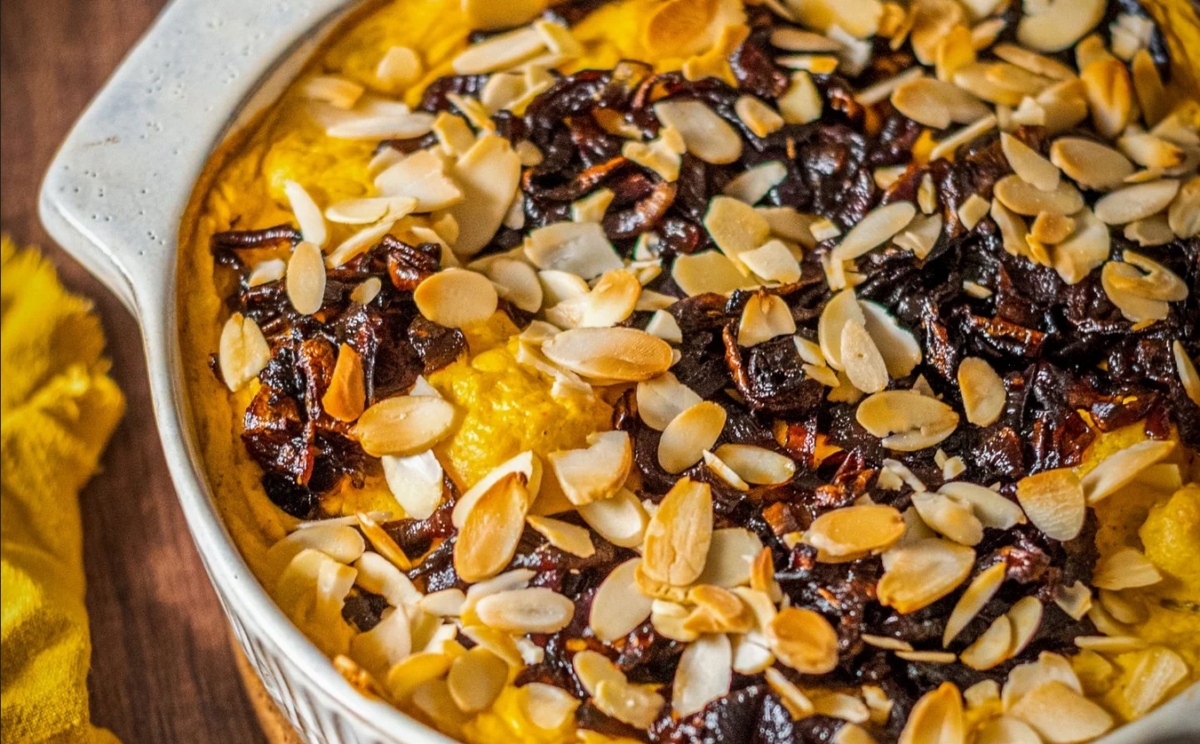
Cauliflower is packed with vitamin C and this recipe from Rise Shine Cook owner Ashley Madden combines bite-sized florets with red onion, bell pepper, and olives along with a tahini and lemon sauce for a delicious and nutritious baked casserole.
Find the recipe here.
Kale, apple, and cashew cheese salad
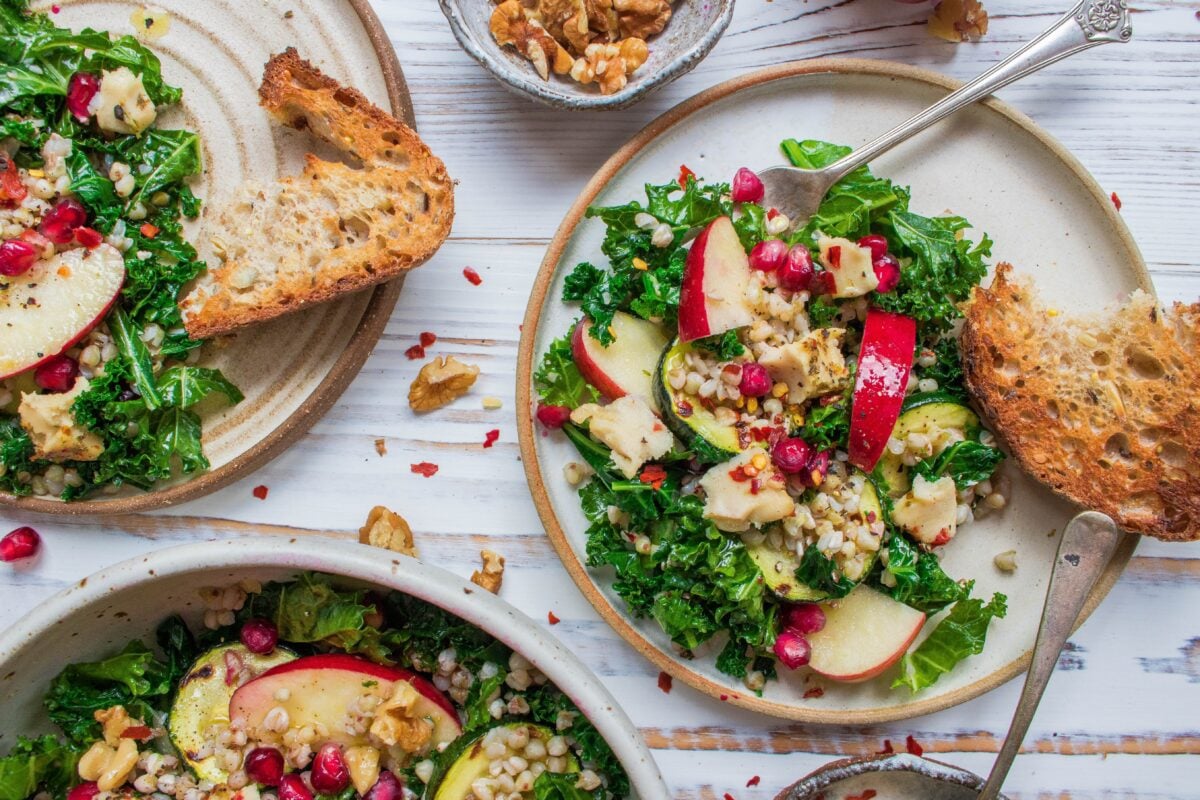
Kale is packed with antioxidants, vitamin K, and vitamin C, as well as plant-based calcium. Happy Skin Kitchen created this recipe, and it includes a how-to section for homemade cashew cheese, complete with probiotics.
Find the recipe here.
Oil-free sautéed vegetables
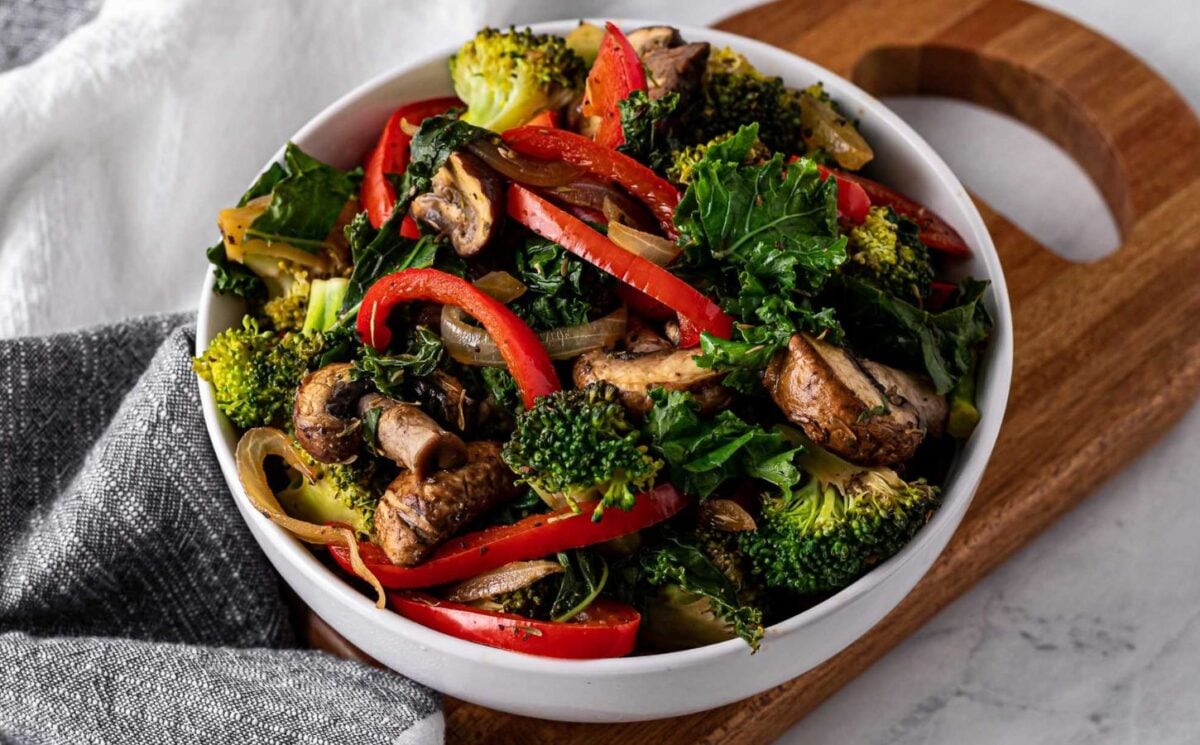
Molly Patrick, AKA Clean Food Dirty Girl, created this recipe as an oil-free, veggie-packed side dish for all occasions. It combines soy sauce, liquid aminos, lemon juice, and lime juice for flavor, as well as dried herbs you likely already have ready in your pantry.
Find the recipe here.
Colorful lentil salad

Colorful, delicious, nutritious, and deceptively simple, this recipe from The Garden Party combines sweet mini peppers, tomatoes, and cucumber with the vegan pantry essential that is tinned green lentils. The blend of lentils and tomatoes means extra vitamin C, too.
Find the recipe here.
Garlic broccoli stir fry with chickpeas
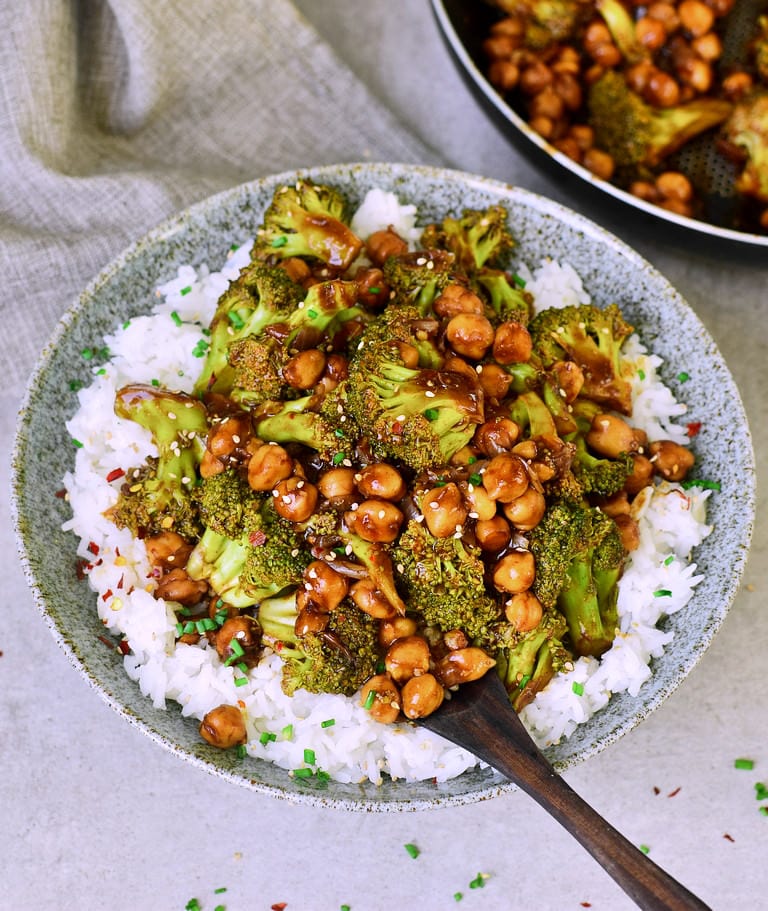
Another simple one, this recipe from ElaVegan requires just one pan and can be ready in less than half an hour. It includes a delicious ginger sauce and also makes use of some store cupboard staples like smoked paprika, stock, and cayenne pepper.
Find the recipe here.
Curried Brussels sprouts
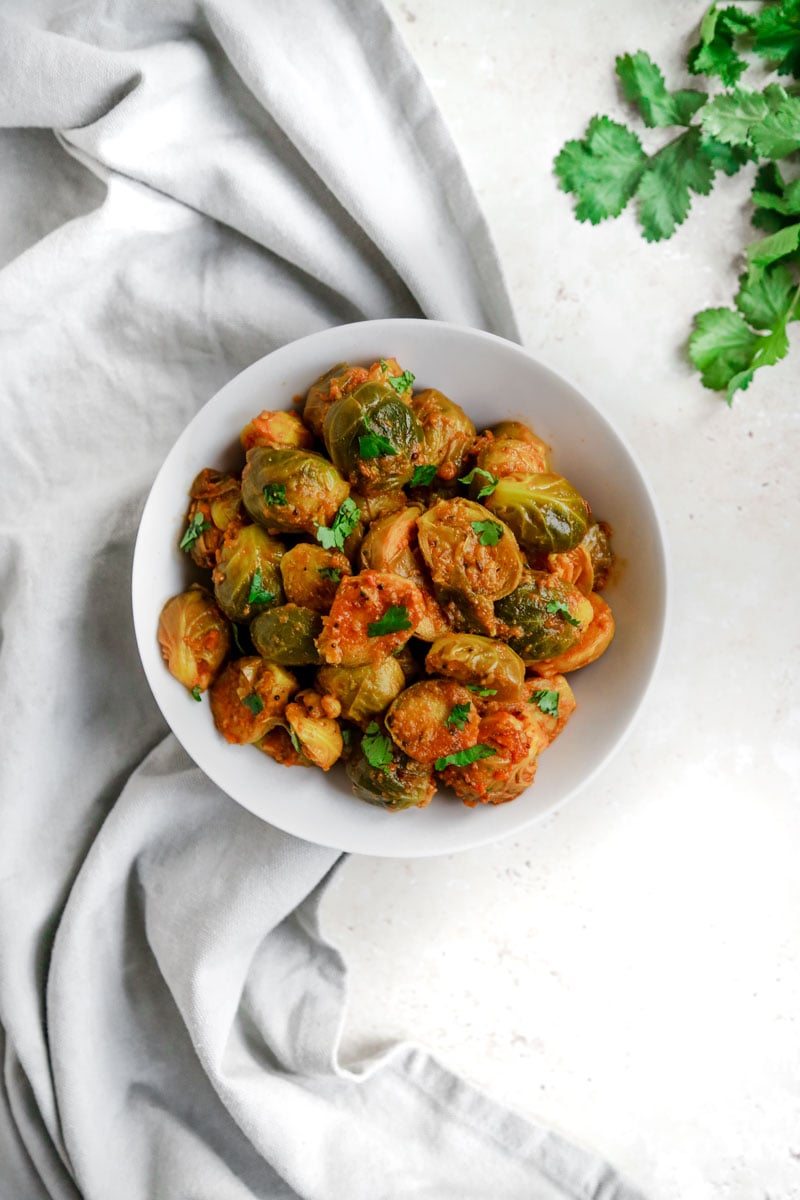
Don’t fancy broccoli? This recipe for curried Brussels sprouts also takes less than 30 minutes to prepare and was created by Cooking With Parita. Serve with practically any main as a spicy side and garnish with some fresh chopped coriander.
Find the recipe here.
Chinese orange tofu and broccoli
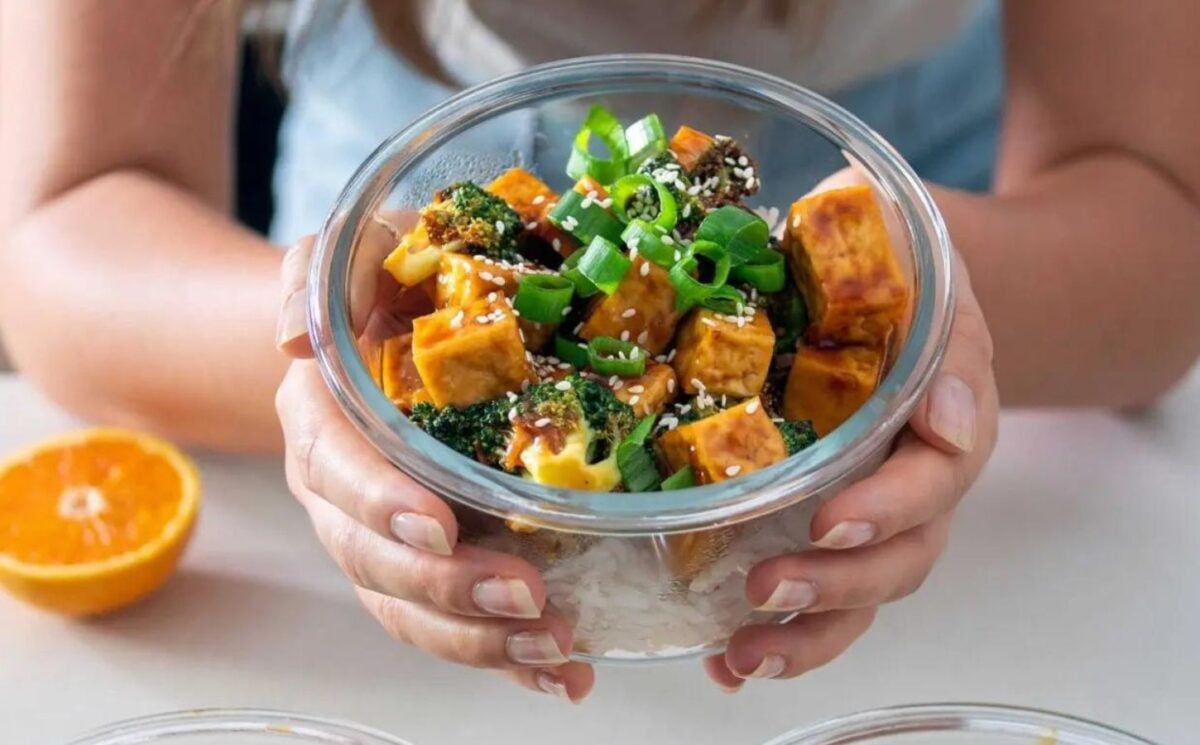
This vegan twist on a Chinese takeaway classic is packed with tofu as well as vitamin C. PlantBaes combines extra firm tofu with plenty of broccoli for a nutrient-dense and satisfying meal – perfect for a healthy post-gym dish or a Saturday night fakeaway.
Find the recipe here.
Creamy brussels sprout lasagna
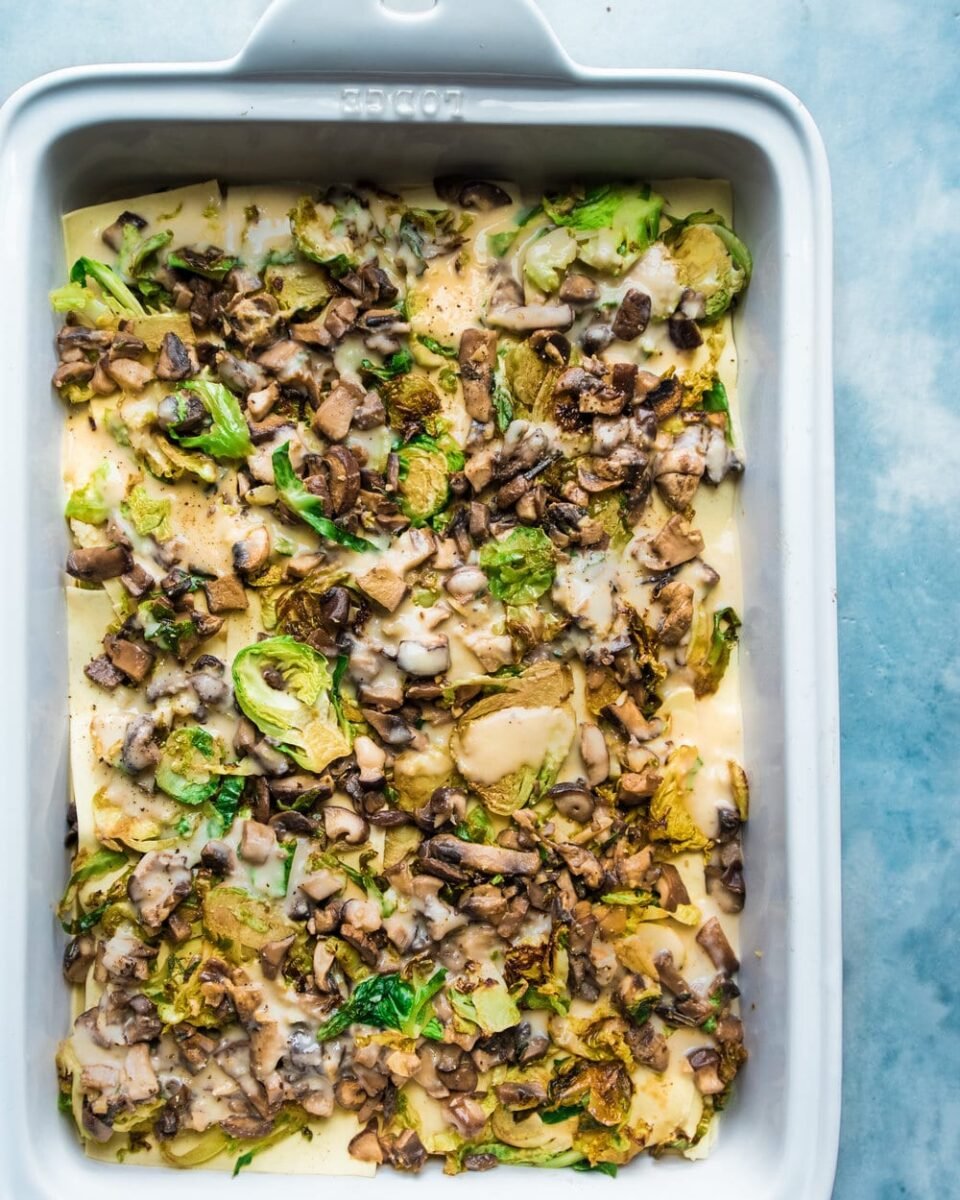
Rainbow Plant Life’s creamy brussels sprout lasagna provides an unexpected, delicious, and nutritious spin on the oft-maligned green vegetable. It’s packed with vitamin C as well as protein, thanks to the creamy tofu “ricotta” sauce.
Find the recipe here.
Strawberry avocado toast with balsamic glaze
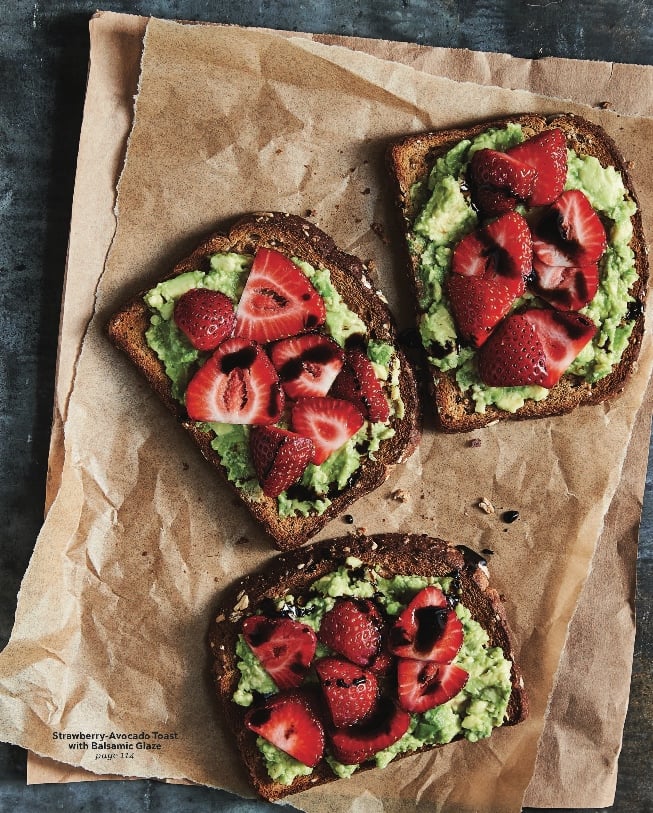
Blending savory and sweet, this recipe from Gabriel Miller is quick and nutritious but feels – and looks – extravagant. The sweetness of the strawberries and the glaze is softened by the creaminess of the avocado for a deceptively simple and moreish breakfast.
Find the recipe here.
Strawberry tart
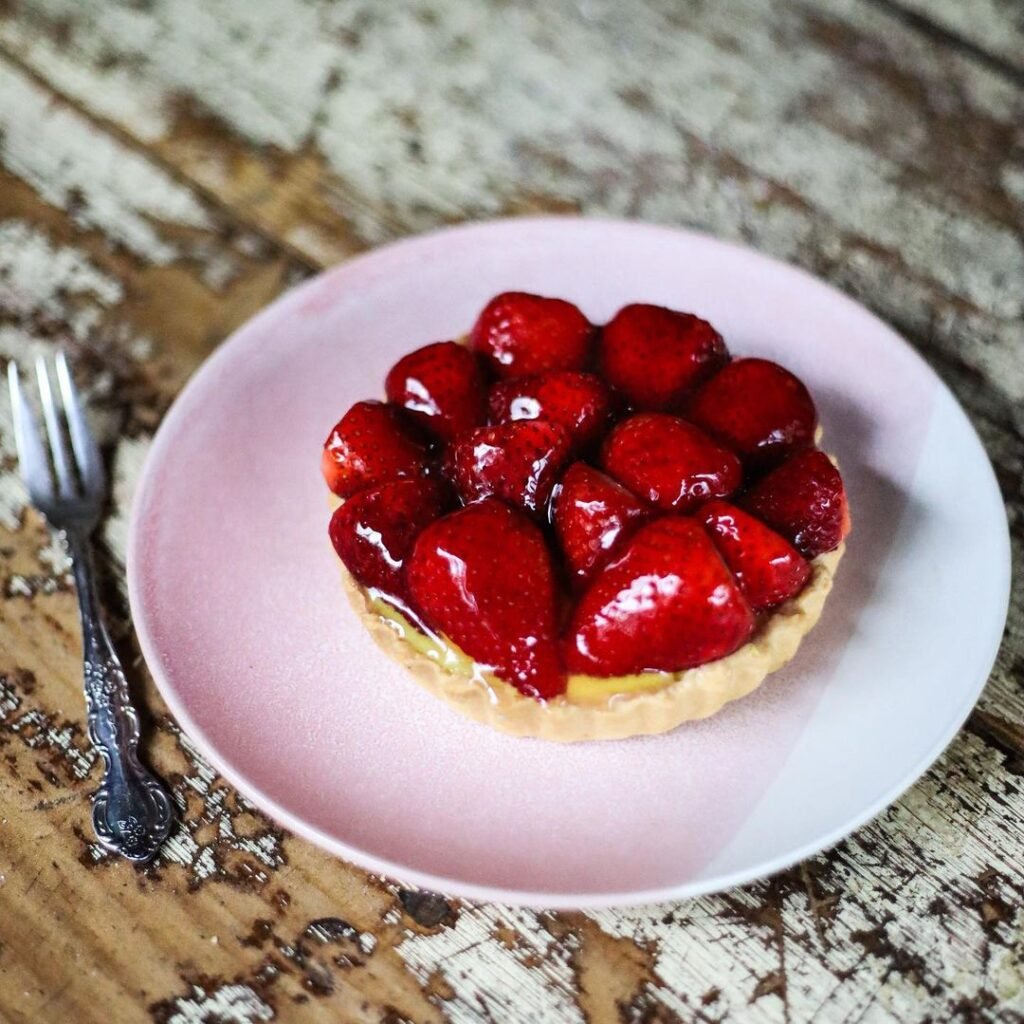
Strawberries are rich in vitamin C, manganese, folate (B9), and potassium. They are also one of the most popular varieties of fruit, according to YouGov. This recipe from Olive Wood Vegan combines sweet strawberries with a creamy custard layer and delicate pastry crust.
Find the recipe here.
No-bake lemon cheesecake
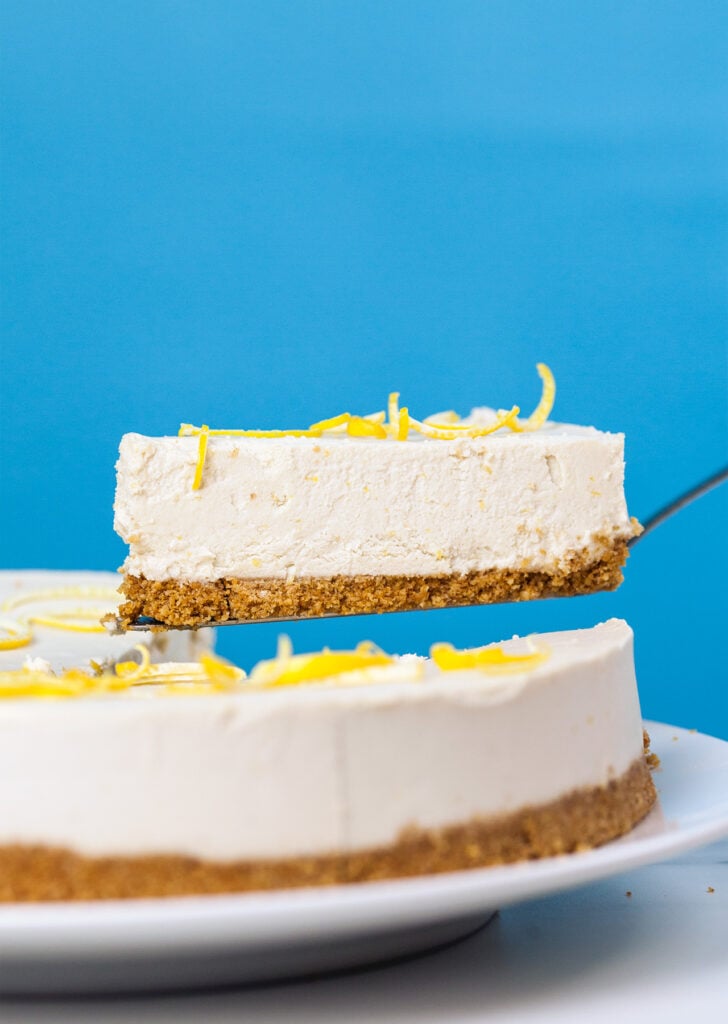
SoVegan’s no-bake lemon cheesecake is creamy, light, and zesty. With an ingredients list that includes five lemons, it’s also rich in vitamin C.
Find the recipe here.
Strawberry and banana smoothie

With just three main ingredients, this smoothie from The Plant Riot makes for a quick breakfast or a healthy dessert. A delightful pink color, the combined strawberries, bananas, and soy milk make for a vitamin-rich and luxurious drink.
Find the recipe here.
Lemon tart with fresh strawberries
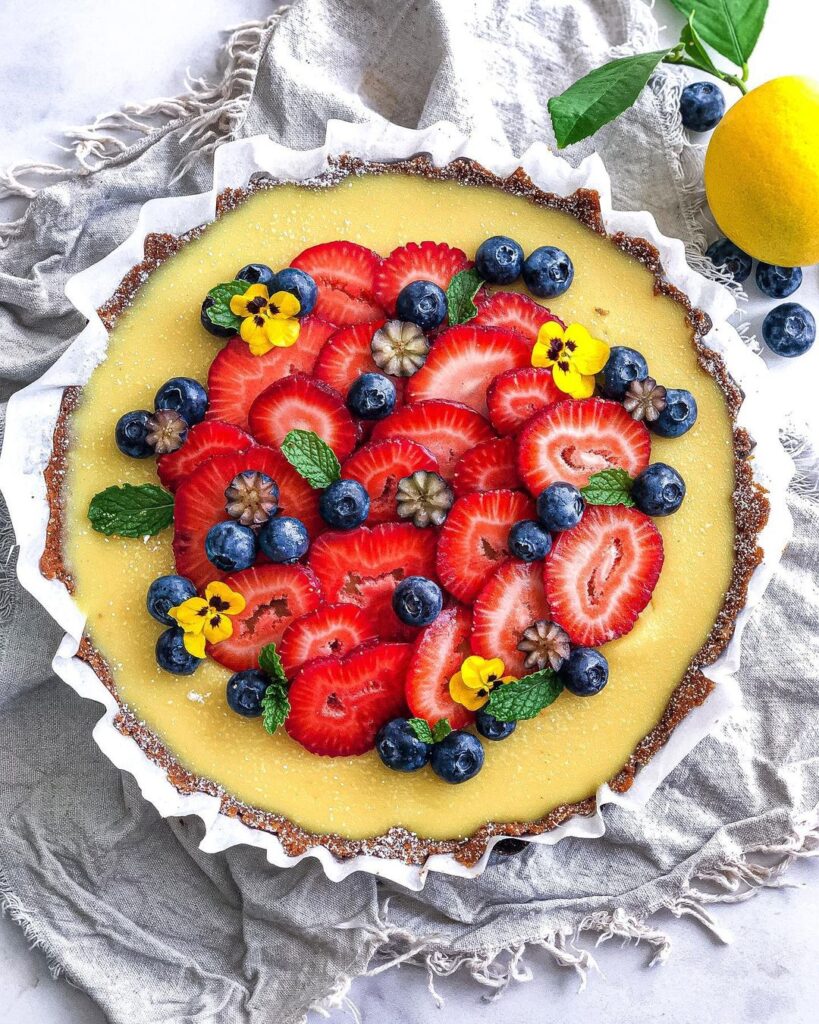
Combining the vitamin C-rich lemons and strawberries of the previous two recipes, this tart from Naturally Zuzu is as beautiful as it is delicious.
Find the recipe here.
Easy strawberry galette with whipped cream

This dairy-free dessert from Viva!’s Vegan Recipe Club is quick, simple, and requires just a few different ingredients. “Galette” is a French culinary name for dishes with a pastry base, including either sweet or savory options. In this instance, the pastry is topped with whipped cream and fresh strawberries for a significant portion of vitamin C.
Find the recipe here.
